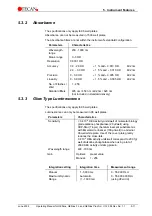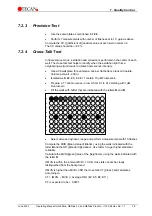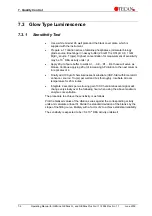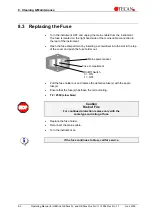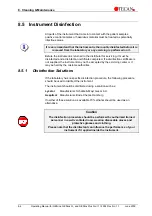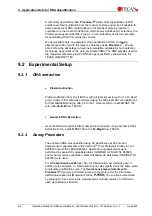
7. Quality Control
For GENios / GENios FL:
The procedure to achieve the sensitivity is as follows:
Divide the standard deviation of the blanks by the blanked average value of
column 1.
Arrive at physical units (g/well) by multiplication with the concentration (1 nMol/l),
the volume per well (200 µl) and the molecular weight (376 g/Mol).
The sensitivity is expected to be 3pg fluorescein per well.
For GENios Plus:
The procedure to achieve the sensitivity is as follows:
Divide the standard deviation of the blanks by the blanked average value of
column 1.
Multiply with a factor 2 to achieve statistical reliability.
Arrive at physical units (g/well) by multiplication with the concentration (1 nMol/l),
the volume per well (200 µl) and the molecular weight (376 g/Mol).
The sensitivity is expected to be 1.5pg fluorescein per well.
7.2.2 Linearity
Test
1
2
3
4
5
6
7
8
9
10
11
12
A
B
C
D
E
F
G
H
B
B
B
B
B
B
B
B
•
Use a 96 well plate, for example: a Greiner flat bottom, black microplate.
•
Prepare a 1:1 dilution series of fluorescein in 0.01 M NaOH solution - each
column will take a different concentration (compare figure).
•
Highest concentration = 1 µM fluorescein, max. volume per well = 200 µl.
•
Provide column 12 as blank (
B
), that is filled with pure NaOH solution.
•
Use 10 flashes and optimal gain function.
Calculate the blanked average RFU (Relative Fluorescence Units) for each of the
columns 1 to 11. Compute the coefficient of correlation using the blanked
average RFUs and the corresponding concentrations. The coefficient of
correlation is expected to be
≥
0.995.
7-2
Operating Manual for GENios, GENios FL, and GENios
Plus
No: I 112 904 Rev No: 1.1
June 2002








